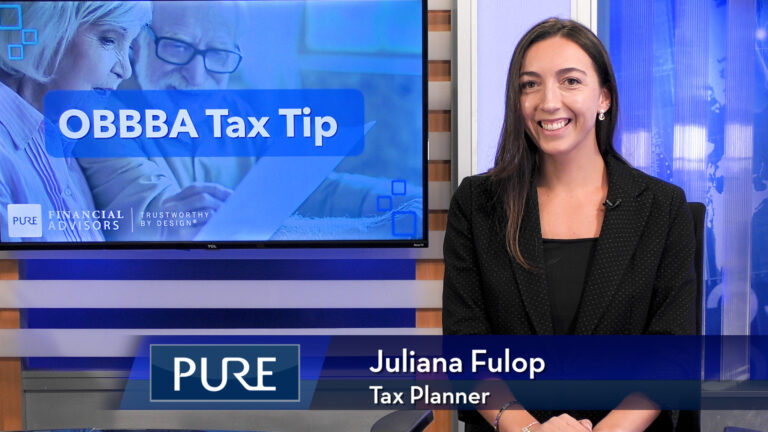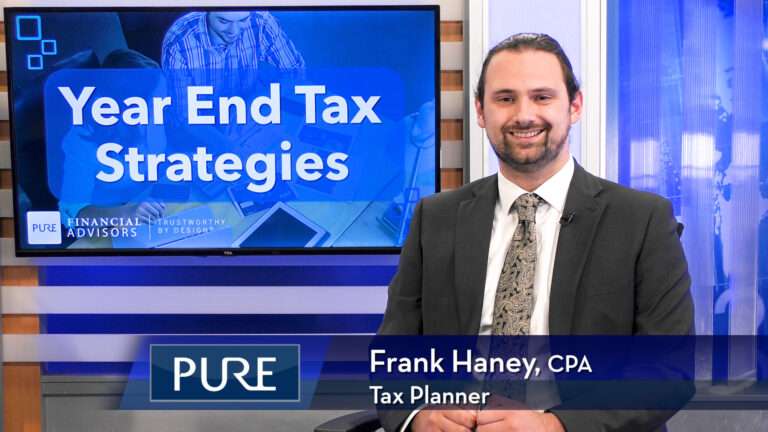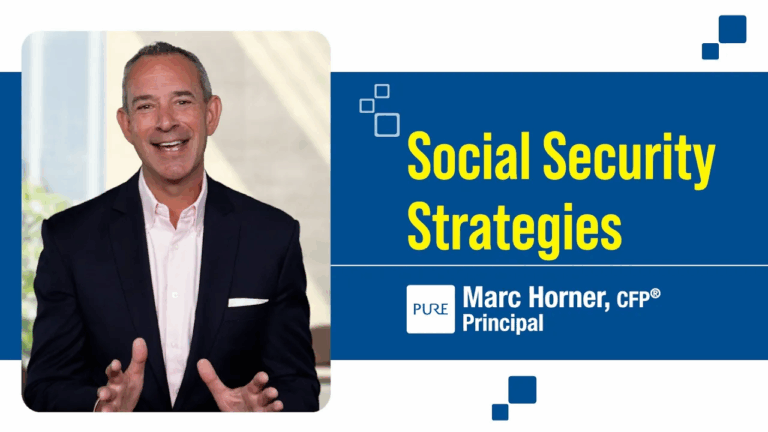Fulfill your retirement goals and safeguard your financial future with a well-designed income strategy to make sure your money lasts as long as you do. Pure’s Financial Planner, Tony Vu, CFP®, explores tactics for creating a highly efficient retirement income strategy that can stand the test of time.
FREE GUIDE | Retirement Readiness Guide
Transcript
After a lifetime of accumulating wealth, transitioning into the distribution phase in retirement presents a different set of challenges. Americans are living longer and enjoying active lifestyles and may need to rely on their retirement strategies for much longer.
A retirement income strategy is designed to allow you to pursue your retirement goals while helping to ensure that your money lasts as long as you do. An ideal income strategy will cover your basic expenses through guaranteed income, hedge against longevity and inflation by pursuing growth, and give you enough flexibility to adapt to changing circumstances.
To create a personalized retirement income strategy, you want to first start by answering two key questions:
- How much income will I need to live comfortably in retirement?
- Where will I get my retirement income?
How much income will I need to live comfortably in retirement?
To answer this, you must first have an idea of your retirement goals and their associated costs. A simple way to organize this is, is breaking down spending into three categories: needs, wants and dreams. Classifying your retirement expenses in these terms can help you understand how much income you will require for essential expenses and how much you will want for discretionary expenses that can be reduced should circumstances change. If you can cover most of your essential expenses through guaranteed sources of income, you have a lot more flexibility to adapt your retirement portfolio to changing market environments.
A recent study by Fidelity found that Americans will need between 55% to 80% of their pre-retirement income during their golden years1. Since that estimate is averaged across different income levels and lifestyle goals, it may not be valid for your personal situation. That’s one of the many reasons why it’s a good idea to work with a professional who can help you create a customized analysis of your retirement.
Where Will I Get My Retirement Income?
Most retirees depend on a mix of income from various sources. Think of creating your income as a three-legged stool. The first leg are guaranteed sources such as Social Security, pensions, or an annuity. The second, being supplemental income such as real estate, business interest or maybe part-time work. The last leg as withdrawals from liquid investments such as retirement accounts and savings. There is no one-size-fits-all solution. However, a diversified income strategy should combine enough guaranteed income to cover your essential expenses, with potential growth to fight inflation, and be flexible enough to keep up with changing priorities and market conditions.
Step 1
Identify your known sources of retirement income as that can help you estimate how much you will need to generate from your investments each year.
Step 2
Consider how much income can be generated and withdrawn from your portfolio without running out during your lifetime. It’s very difficult to know in advance what you can safely withdraw from your portfolio each year since it depends on many interdependent variables, such as market performance, life expectancy, inflation, and more. One major risk that today’s retirees have to deal with is the effects of volatility and rising inflation on their portfolio returns.
Step 3
Structure your portfolio to support your withdrawal needs. This is where having an appropriate globally diversified portfolio will help. Diversification will allow you the flexibility to withdraw from your portfolio and reduce the risk emptying it too fast. By building flexibility into your strategy and carefully managing risk, you can help reduce the effects of these negative periods on your retirement portfolio. Saving and investing for retirement is just the first step. Developing an income strategy and maintaining it over time is a very different challenge. If you or anyone you know has questions about building a personalized retirement income strategy, please contact our office and be connected to one of our experienced advisors.
1 Fidelity, What Will My Savings Cover in Retirement?, August 2021. https://www.fidelity.com/viewpoints/retirement/retirement-income-sources.
Subscribe to our YouTube channel.
IMPORTANT DISCLOSURES:
• Investment Advisory and Financial Planning Services are offered through Pure Financial Advisors, LLC, a Registered Investment Advisor.
• Pure Financial Advisors LLC does not offer tax or legal advice. Consult with your tax advisor or attorney regarding specific situations.
• Opinions expressed are subject to change without notice and are not intended as investment advice or to predict future performance.
• Investing involves risk including the potential loss of principal. No investment strategy can guarantee a profit or protect against loss in periods of declining values.
• All information is believed to be from reliable sources; however, we make no representation as to its completeness or accuracy.
• Intended for educational purposes only and are not intended as individualized advice or a guarantee that you will achieve a desired result. Before implementing any strategies discussed you should consult your tax and financial advisors.
CFP® – The CERTIFIED FINANCIAL PLANNER™ certification is by the Certified Financial Planner Board of Standards, Inc. To attain the right to use the CFP® designation, an individual must satisfactorily fulfill education, experience and ethics requirements as well as pass a comprehensive exam. Thirty hours of continuing education is required every two years to maintain the designation.













